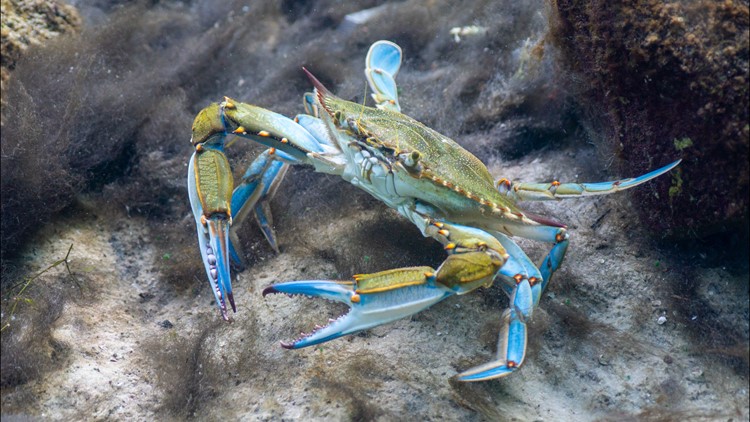NORFOLK, Va. — The number of blue crabs living in the Chesapeake Bay is showing improvement after reaching record lows in 2022, a survey conducted jointly by Virginia and Maryland found.
The 2023 Blue Crab Winter Dredge Survey put the estimated total crab abundance at 323 million, compared to the 227 million estimated in 2022, the Virginia Marine Resources Commission (VMRC) said.
The increase from last year's count can be attributed to adult crabs, with adult males nearly doubling and adult females returning to above-average levels. Juvenile crab numbers improved slightly but are still below average.
The survey is a collaboration between the Virginia Institute of Marine Science and the Maryland Department of Natural Resources to see the population of blue crabs in the Chesapeake Bay and its tributaries. It takes place every year from December through March, covering more than 1,500 locations.
Blue crabs are highly important to the Chesapeake Bay's commercial and recreational fisheries, having ranged from $22 million to $38 million in commercial harvest value in Virginia, according to the Chesapeake Bay Foundation (CBF).
The foundation also said the species plays an important role in the bay's food web, eating a range of food that include mussels, oysters, small crustaceans and decaying plant and animal matter.
While the population of blue crabs fluctuates each year, the species faces several headwinds for its survival, including predators, underwater "dead zones," vanishing habits and cold winters.
CBF Scientist Chris Moore said while this year's results show signs of recovery, there are still reasons to be concerned about blue crab populations.
"The recent decline in the Bay’s underwater grasses is likely contributing to low blue crab numbers, as well as pollution and predation by invasive blue catfish," Moore wrote in a news release. "Long-term recovery of the Bay’s blue crab population will only be possible through continued wise management of the fishery, combined with actions to improve water quality and address predation from invasive species in the Bay."



